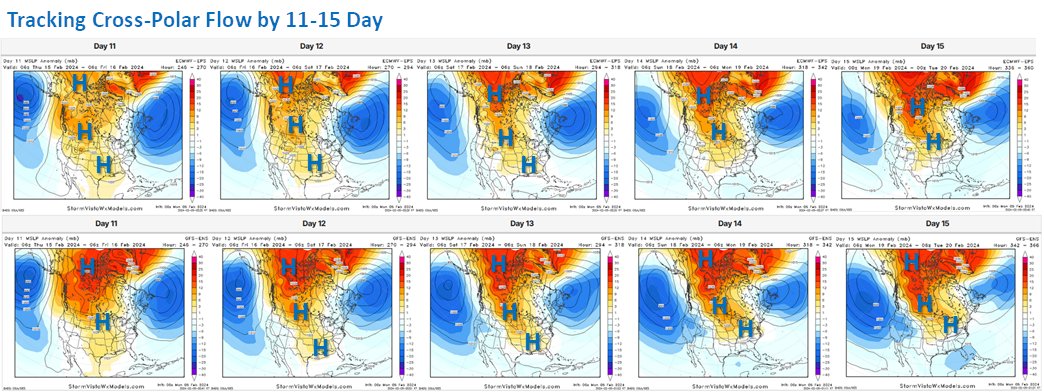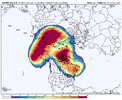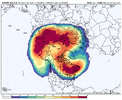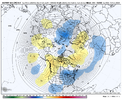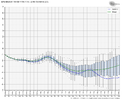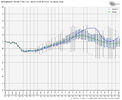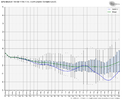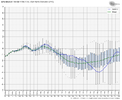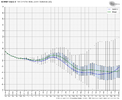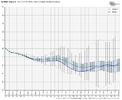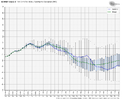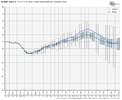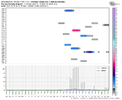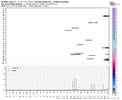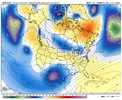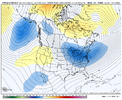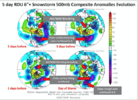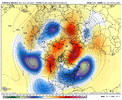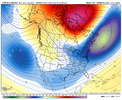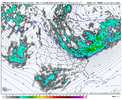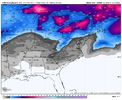-
Hello, please take a minute to check out our awesome content, contributed by the wonderful members of our community. We hope you'll add your own thoughts and opinions by making a free account!
You are using an out of date browser. It may not display this or other websites correctly.
You should upgrade or use an alternative browser.
You should upgrade or use an alternative browser.
Pattern February 2024
- Thread starter SD
- Start date
AJ1013
Member
You guys seem to have figured out a way to export your cold winter rain to south florida. Can you take it back please? I’m not a fan.
- Joined
- Jan 23, 2021
- Messages
- 4,090
- Reaction score
- 12,925
- Location
- Lebanon Township, Durham County NC
Today is the last day for the next fifteen days where the NAO and AO are bordering positive/neutral ccording to the EPS. By tomorrow, they are both going to -2(out of 7).
GEFS indices:Today is the last day for the next fifteen days where the NAO and AO are bordering positive/neutral ccording to the EPS. By tomorrow, they are both going to -2(out of 7).
PNA - Going mostly positive, with a trend towards neutral in the LR. ***Would rather see this stay strongly positive
NAO - Averaging ever so slightly negative throughout. ***Have no idea if this would be a player
AO - Falling off a cliff (negative). ***You would think our side of the world will get cold
Absolutely. The 00z EPS was encouraging to me on that front. Good run for sure, let's keep it going.
View attachment 145195
View attachment 145196
View attachment 145197
I assume we still need it further east? This is a colder pattern but sure seems like the PV location is tricky.
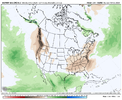
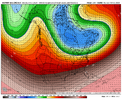
- Joined
- Jan 23, 2021
- Messages
- 4,090
- Reaction score
- 12,925
- Location
- Lebanon Township, Durham County NC
lexxnchloe
Member
Dry and cold followed by warm and wet?I assume we still need it further east? This is a colder pattern but sure seems like the PV location is tricky.
View attachment 145205
View attachment 145204
- Joined
- Jan 23, 2021
- Messages
- 4,090
- Reaction score
- 12,925
- Location
- Lebanon Township, Durham County NC
MichaelJ
Member
With the TPV as indicated is how the people east of the apps get the very cold air, question is will it also suppress the storm track and at this point it looks like it
Yeah, when you look at the anomolies it looks great but when you look at heights your like...uh oh.With the TPV as indicated is how the people east of the apps get the very cold air, question is will it also suppress the storm track and at this point it looks like it
But, I also don't think it's winter over....we need cold to get in and get entrenched, which it does and then we need some tweaks and a whole lot of luck.
- Joined
- Jan 23, 2021
- Messages
- 4,090
- Reaction score
- 12,925
- Location
- Lebanon Township, Durham County NC
Actually you kinda want there to be fluctuating in the positive territory on the PNA. Often times when it stays strongly positive is actually when there is legitimate suppression concerns.GEFS indices:
PNA - Going mostly positive, with a trend towards neutral in the LR. ***Would rather see this stay strongly positive
NAO - Averaging ever so slightly negative throughout. ***Have no idea if this would be a player
AO - Falling off a cliff (negative). ***You would think our side of the world will get cold
NoSnowATL
Member
like thisActually you kinda want there to be fluctuating in the positive territory on the PNA. Often times when it stays strongly positive is actually when there is legitimate suppression concerns.

Agreed. It looked to be moving into position on most members at the very end of the 00z EPS run, but it looks to me like it would be after the 20th before we would really establish a "great" pattern for those east of the Apps, with the usual caveats of this is 15+ days away and will this ever actually happen.I assume we still need it further east? This is a colder pattern but sure seems like the PV location is tricky.
View attachment 145205
View attachment 145204
That's what has been so frustrating to me lately. We keep tracking the perfect pattern, one we only get a handful of times in a decade, but yet we usually snow most winters with some setups that frankly look like garbage. I've revisited some of the old threads from several years ago and I'm shocked -- and honestly annoyed -- at how we (including myself) were so confident in setups that ended up delivering that looked way worse than ones we've tracked recently that didn't deliver.We wasted a very far south deep ull the past couple of days and then you look at another in southern Texas and you wonder what would happen if we had just a little luck.
View attachment 145222
packfan98
Moderator
Another CAD storm setting up on the 12z GFS. High pressure funnelling in the cold air. Let's see how far south it gets.


iGRXY
Member
12Z CMC setting the table up nicely for our period of interest:




Is that building in cold air or retreating?
CNCsnwfan1210
Member
Probably a good little front end thump if it verified
Sent from my SM-A136U1 using Tapatalk
- Joined
- Jan 23, 2021
- Messages
- 4,090
- Reaction score
- 12,925
- Location
- Lebanon Township, Durham County NC
the semantics dont matter at this stage - we've maintained the signal on the OP. Lets hope we hold serve or do better on the GEFS
Slow building signal for the Feb 17th-20th timeframe. Slow & steady.
Interesting. That does look like the typical winter storm in NC as far where the snow and rain line sets up.
packfan98
Moderator
I liked that CMC run. PNA really started to stretch out. Aleutian low got going. Then it threw a vort down the stovepipe beyond 220’ish. If we can just hold that feature for longer then a couple of days you’d think we could have a real shot here.
- Joined
- Jan 23, 2021
- Messages
- 4,090
- Reaction score
- 12,925
- Location
- Lebanon Township, Durham County NC
iGRXY
Member
GEPS rolling in significantly colder than last run. I'd say so, i guess, with this look:
View attachment 145228

Correct
iGRXY
Member

Everyone is interedted in this timeframe, CMCE are very much colder
iGRXY
Member

NBAcentel
Member
- Joined
- Jan 23, 2021
- Messages
- 4,090
- Reaction score
- 12,925
- Location
- Lebanon Township, Durham County NC
850 line went from between US 74 and I-40 in NC to just about a line from Charleston to Macon. Usually, I am not too worried with the location of that isobar line in a long range forecast but a move that south in one run is significant.
the semantics dont matter at this stage - we've maintained the signal on the OP. Lets hope we hold serve or do better on the GEFS
All we can hope for is a for sure place at the table, we can sort out who gets served what later.
coldfront22
Member
Great post Arcc. You want to be at the table. This may be our only shot this winter, so my fingers are crossed.
rburrel2
Member
That's a massive snow mean on the CMCE considering it all falls after hour 300.
What I'm digging about this setup is we may actually have a several day period to score. Instead of the typical requirement the last couple years of needing to perfectly time a wave with fleeting cold air.
When you get a solid 4-5 day stretch of 50/50 low/CAD/ suppressive height field with a very active southern stream slinging multiple waves out, that makes the uprights rather wide compared to normal for kicking the field goal. And that's all we can hope for until we fine tune a storm signal.
What I'm digging about this setup is we may actually have a several day period to score. Instead of the typical requirement the last couple years of needing to perfectly time a wave with fleeting cold air.
When you get a solid 4-5 day stretch of 50/50 low/CAD/ suppressive height field with a very active southern stream slinging multiple waves out, that makes the uprights rather wide compared to normal for kicking the field goal. And that's all we can hope for until we fine tune a storm signal.
Mahomeless
Member
Keep nudging that AK ridge further west and send us a wave down the stovepipe.....that will be a fitting end to this winter!
Stormlover
Member
That cross polar flow looks nice
